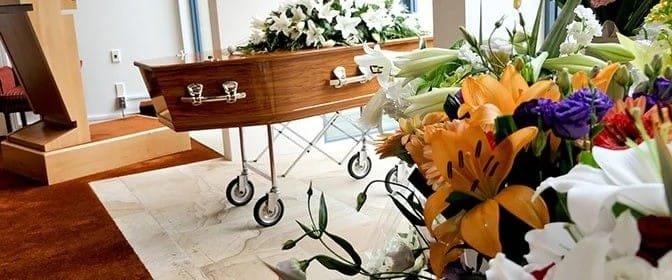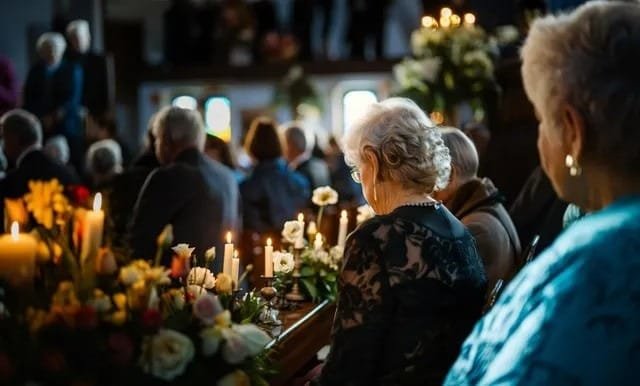Funeral viewing services hold a significant place in the grieving process, providing an opportunity for family and friends to honor and remember the deceased. These gatherings allow mourners to pay their respects and offer support to the grieving family in a setting that is both solemn and meaningful.

At Best Funeral Homes Houston, we understand the complexities of loss and are committed to guiding families through this difficult time. As trusted providers of comprehensive funeral services, we aim to simplify the process and provide compassionate care to those in need.
A funeral viewing serves as a crucial step in the grieving process, offering a space for closure and reflection. This article will guide you through the essentials of funeral viewing services, helping you understand their purpose, etiquette, and what to expect.
Understanding Funeral Viewing Services
What is a Funeral Viewing?
A funeral viewing, often referred to as a visitation, is a gathering held before the funeral service where the deceased is typically present. This may involve an open casket to allow mourners a final opportunity to see the person and say their farewell. In cases where a cremation has occurred, a cremation urn may take the place of the casket.
The primary purpose of a funeral viewing is to provide a moment of closure and facilitate the grieving process. It allows mourners to express their sorrow, share memories, and support the grieving family in a personal and intimate setting.

By attending a funeral viewing, friends and acquaintances honor the life of the person while also offering their condolences to the family. This practice holds profound emotional and cultural importance, helping attendees cope with their loss.
The Main Differences Between Funeral Viewings, Wakes, and Funerals
While often used interchangeably, funeral viewings, wakes, and funerals are distinct events with unique purposes.
- Funeral Viewings: Typically solemn gatherings where mourners pay respects to the deceased, often with the body present in a casket.
- Wakes: These are often more informal and rooted in cultural or religious traditions. For instance, in Catholic tradition, a rosary is commonly recited during a wake.
- Funerals: A structured ceremony, usually held at a place of worship or funeral home, focusing on eulogies and rituals that celebrate the life of the person.
Each type of service caters to different aspects of the grieving process, and some families may choose to incorporate multiple events depending on their wishes and traditions.
The Purpose of a Funeral Viewing in the Grieving Process
A funeral viewing plays a vital role in helping individuals navigate the complexities of grief.
- Tribute to the Deceased: The viewing is a time to honor the life of the person, reflecting on their legacy and memories. Mourners often share stories and meaningful moments, creating a sense of connection and remembrance.
- Supporting the Grieving Family: It provides an opportunity for the grieving family to receive support from friends, acquaintances, and the community. Expressions of condolences can offer immense comfort during this difficult time.
- Closure for Mourners: Seeing the deceased one last time, whether in an open casket or as part of a memorial service, can bring a sense of closure. This moment allows attendees to say their final goodbyes and process their emotions in a supportive environment.
At its core, a funeral viewing is a common practice that bridges the emotional gap between loss and acceptance, making it an integral part of the grieving process.
Preparing for a Funeral Viewing
Choosing the Right Attire for a Viewing
When attending a funeral viewing, choosing appropriate attire is essential to show respect for the deceased and their family. While traditional funeral attire often leans toward formal, dark-colored clothing, considerations may vary depending on the type of service and the family’s preferences.
- For a House of Worship: If the viewing is held in a place of worship, modest and conservative clothing is typically expected. For example, in Catholic tradition, women may wear long dresses or skirts, and men often wear suits or dress shirts with ties.
- For a Family Home: A more casual setting may allow slightly relaxed attire, but it’s always better to err on the side of formality to maintain the occasion’s solemnity.
Cultural and religious funerals may have specific dress codes, so it’s helpful to inquire beforehand. Above all, your choice of clothing should reflect empathy and respect.
Expected Etiquette and Behavior at a Funeral Viewing
Adhering to proper funeral etiquette helps create a supportive and respectful environment during the viewing.
- Respect the Solemnity: Keep conversations quiet and avoid disruptive behavior. A viewing is a time of reflection and mourning, so maintaining a calm demeanor is crucial.
- Follow the Family’s Wishes: Respect any specific requests or guidelines set by the grieving family regarding behavior or participation.
- Mind Your Time: While attending a viewing is important, staying for an extended period may inadvertently disrupt the family. Keep your visit to an appropriate period of time unless asked otherwise.
By observing these practices, you contribute to the occasion’s sense of closure and support for all attendees.
What to Expect at a Funeral Viewing
Meeting the Funeral Director and Religious Leaders
The funeral director plays a pivotal role in orchestrating the event, ensuring that everything proceeds smoothly. They may guide you on where to go, explain the sequence of events, and answer any questions you have about the service.

Similarly, a religious leader—such as a priest or rabbi—might be present to offer prayers or words of comfort. Their presence helps maintain the event’s solemnity, especially in religious funerals or gatherings at a house of worship.
These professionals ensure the family’s wishes are respected and the viewing remains a dignified tribute to the deceased.
Common Practices During a Viewing
Attendees may encounter various common practices during a viewing, depending on cultural, personal, and religious factors:
- Open Casket Viewings: These allow mourners to see the deceased and say their final goodbyes. Seeing the body present can help some individuals find closure.
- Cremation Urn Presentations: In cases of cremation, an urn may be displayed alongside photographs or memorabilia of the deceased.
- Length of Stay: Most attendees remain for a brief period of time to pay respects and offer condolences. If you’re unsure about how long to stay, a general guideline is 15-30 minutes.
These elements come together to create an environment that honors the life of the person and supports the grieving family.
Supporting the Grieving Family
Offering Condolences and Support
Expressing condolences can be a delicate task, but a few heartfelt words can mean a great deal to the family. Consider saying things like:
- “I’m sorry for your loss. [Name] was a wonderful person who will be greatly missed.”
- “You and your family are in my thoughts and prayers during this difficult time.”
Acknowledging the wishes of the family and their emotional needs is key. Keep your words genuine and avoid platitudes that may feel impersonal.
Flowers and Gifts: What’s Appropriate?
Flowers are a traditional way to express sympathy during a funeral visitation. Options like lilies, roses, or carnations are commonly used for their association with peace and remembrance.
- Religious Funerals: Certain traditions, such as those in Catholic tradition, may have specific preferences for flower arrangements or religious tokens.
- Practical Gifts: In addition to flowers, consider offering a small gesture like a sympathy card or a donation in the deceased’s memory.
Being thoughtful in your choice of flowers or gifts can provide comfort and reflect your support for the grieving family.

